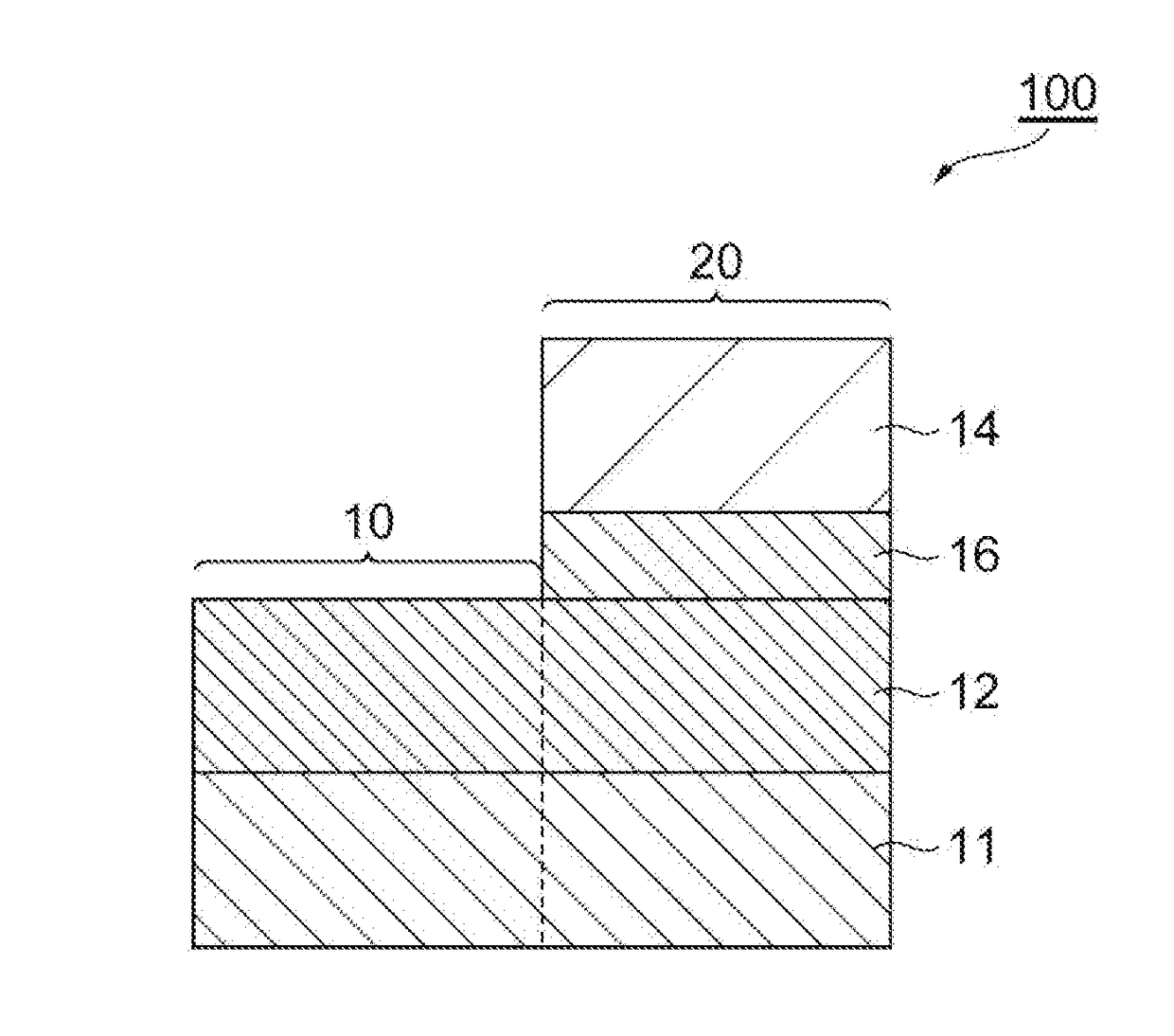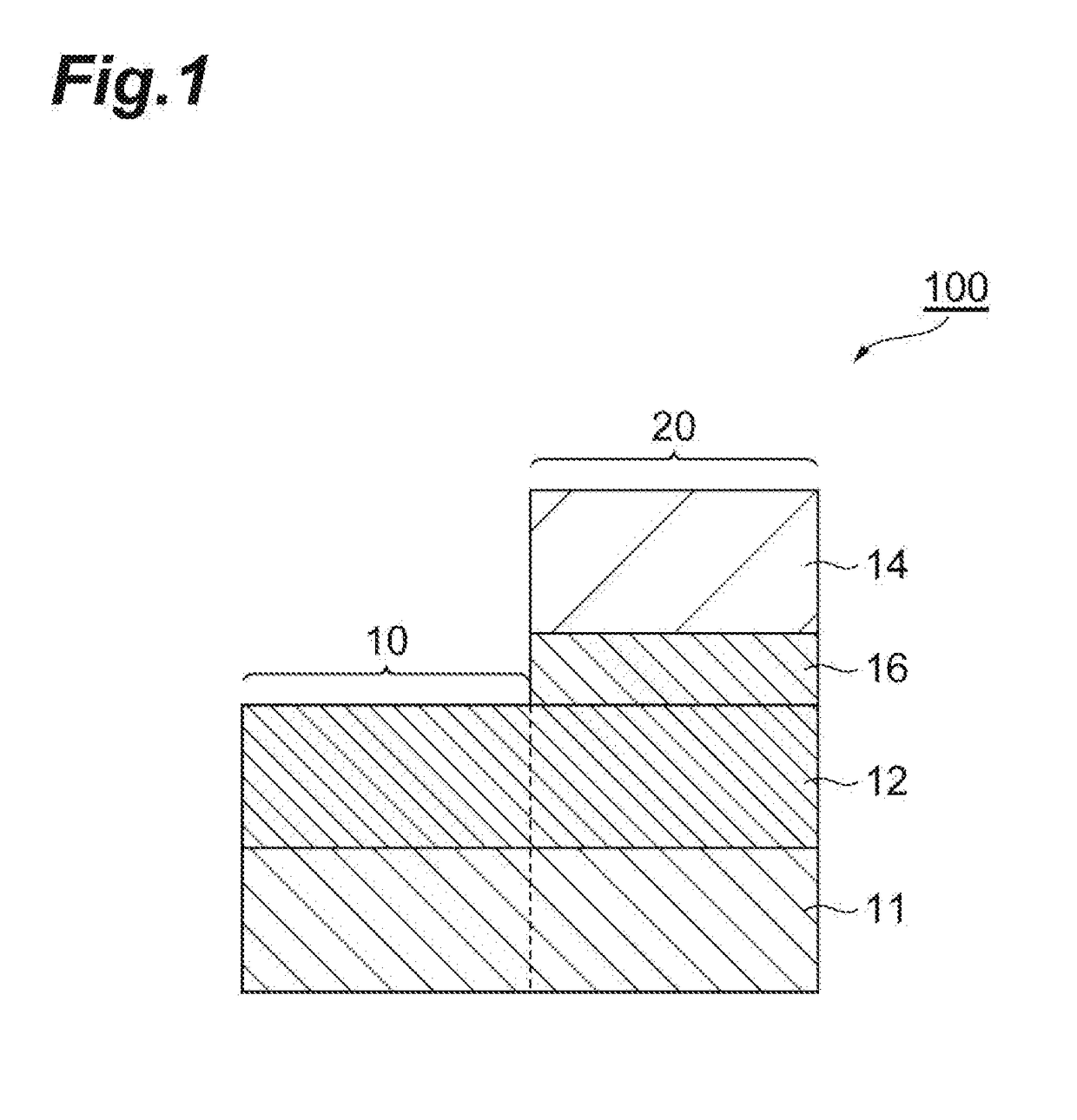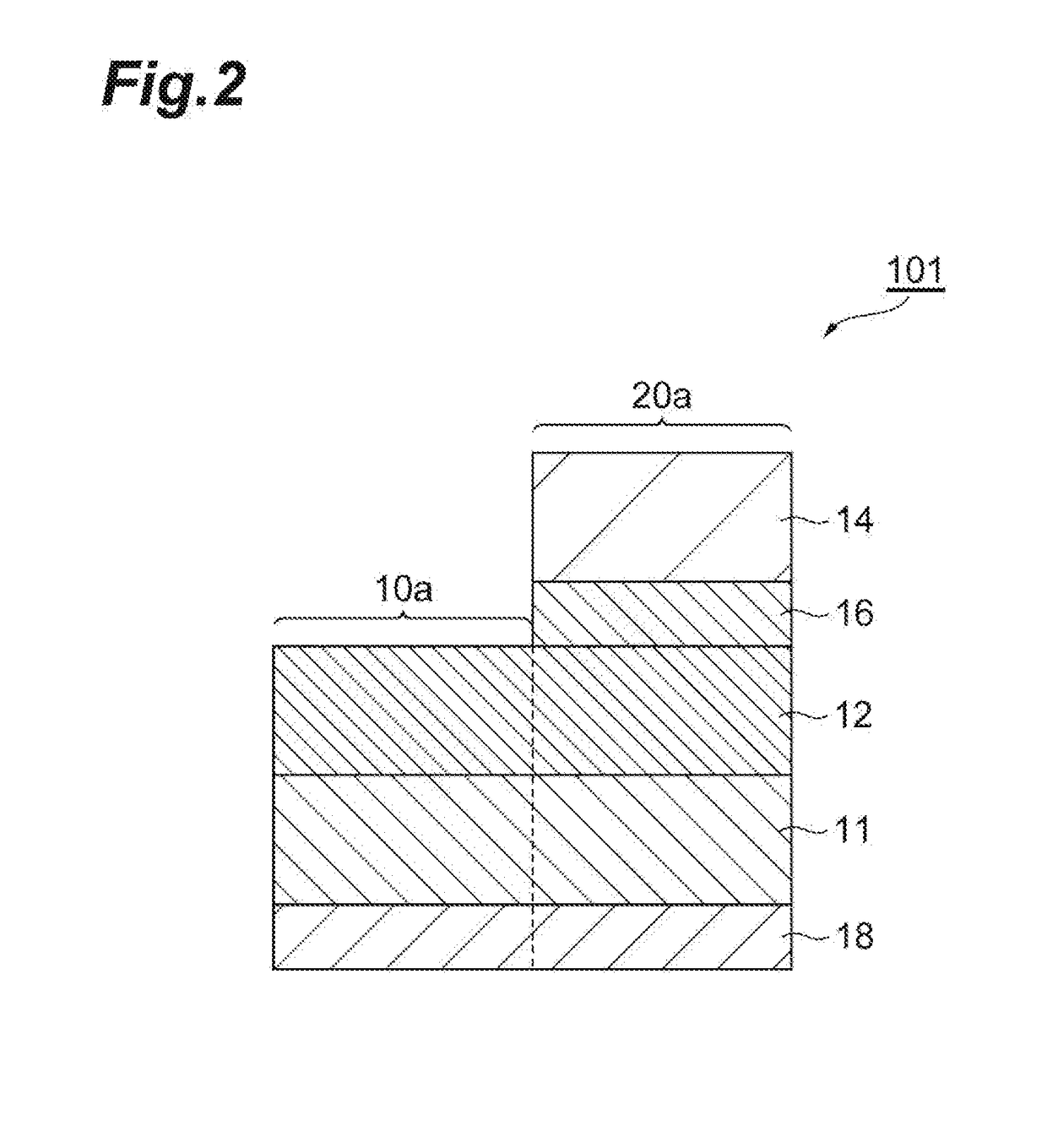Transparent conductor, method for producing same, and touch panel
- Summary
- Abstract
- Description
- Claims
- Application Information
AI Technical Summary
Benefits of technology
Problems solved by technology
Method used
Image
Examples
example 1
(Production of Transparent Conductor)
[0154]A polyethylene terephthalate film with a thickness of 50 μm (manufactured by TORAY INDUSTRIES, INC., product number: UH13, refractive index: 1.61) was prepared. The PET film was used as the transparent resin substrate. A coating material for producing the hardcoat layer on the back surface of the PET film was prepared by using the following procedure.
[0155]The following raw materials were prepared.[0156]colloidal silica modified with reactive groups (dispersion medium: propylene glycol monomethyl ether acetate, nonvolatile content: 40% by mass): 100 parts by mass[0157]dipentaerythritol hexaacrylate: 48 parts by mass[0158]1,6-hexanediol diacrylate: 12 parts by mass[0159]photopolymerization initiator (1-hydroxycyclohexyl phenyl ketone): 2.5 parts by mass
[0160]The above raw materials were diluted with a solvent (propylene glycol monomethyl ether (PGMA)) and mixed together to disperse the components in the solvent. Thereby, a coating material w...
example 2
[0171]Transparent conductors (without the glass layer, with the glass layer) were produced in the same manner as in Example 1, except that the thickness of each of the transmittance-controlling layer and the metal oxide layer was changed as shown in Table 1, a ZnO—In2O3—TiO2—SnO2 target was used in formation of the metal oxide layer, and the high refractive index layer was formed between the transparent resin substrate and the transmittance-controlling layer. The composition of the target used for formation of the metal oxide layer was ZnO:In2O3:TiO2:SnO2=44:26:11:19 (mol %). The composition of the metal oxide layer formed was the same as the composition of the corresponding target. The composition, thickness, and refractive index of each layer are shown in Table 1.
[0172]The high refractive index layer was formed by using the following procedure. A resin composition containing zirconium oxide (ZrO2) (trade name: TYZ70, manufactured by TOYO INK CO., LTD., refractive index: 1.70) was ...
example 3
[0173]Transparent conductors (without the glass layer, with the glass layer) were produced in the same manner as in Example 2, except that the thickness of each of the transmittance-controlling layer and the high refractive index layer was changed as shown in Table 2, and the low refractive index layer was formed between the transparent resin substrate and the high refractive index layer. The composition, thickness, and refractive index of each layer are shown in Table 2.
[0174]The low refractive index layer was formed by using the following procedure. A resin composition containing silicon oxide (SiO2) (trade name: ENS653, manufactured by DIC Corporation, refractive index: 1.45) was diluted with propylene glycol monomethyl ether (PGMA) as a solvent to prepare a coating material with a nonvolatile content (NV) of 3% by mass. The coating material prepared was applied onto the other surface (front surface) of the transparent resin substrate to form the low refractive index layer. There...
PUM
| Property | Measurement | Unit |
|---|---|---|
| Fraction | aaaaa | aaaaa |
| Fraction | aaaaa | aaaaa |
| Fraction | aaaaa | aaaaa |
Abstract
Description
Claims
Application Information
 Login to View More
Login to View More - R&D
- Intellectual Property
- Life Sciences
- Materials
- Tech Scout
- Unparalleled Data Quality
- Higher Quality Content
- 60% Fewer Hallucinations
Browse by: Latest US Patents, China's latest patents, Technical Efficacy Thesaurus, Application Domain, Technology Topic, Popular Technical Reports.
© 2025 PatSnap. All rights reserved.Legal|Privacy policy|Modern Slavery Act Transparency Statement|Sitemap|About US| Contact US: help@patsnap.com



